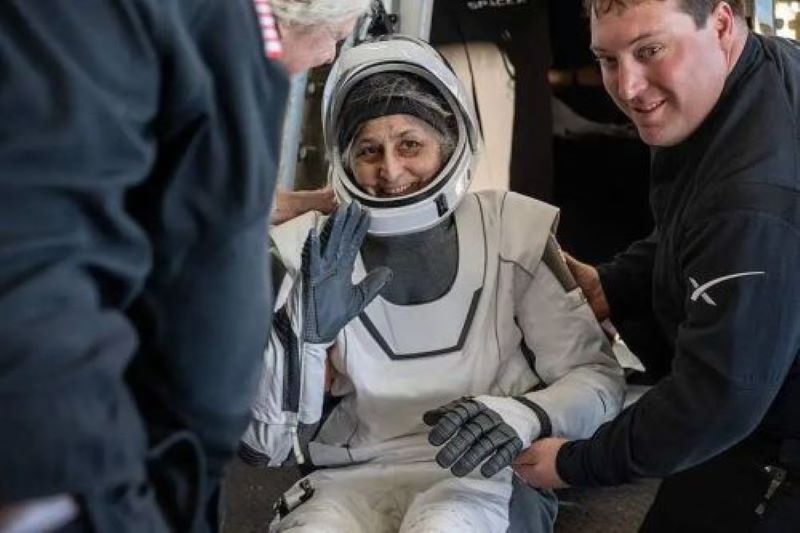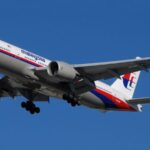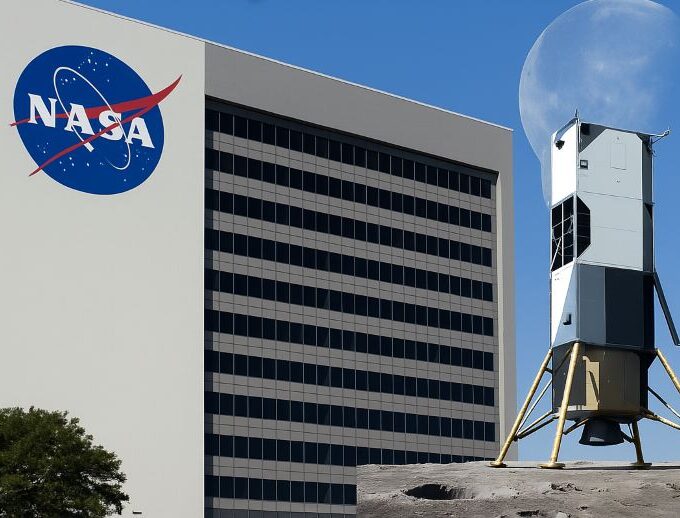The business trip unexpectedly lasted from 8 days to 286 days. After flying nearly 4,600 times around the earth, the tortuous space journey of the two American astronauts finally ended. The US SpaceX “Dragon” spacecraft landed near the coast of Florida, and the two American astronauts who were stranded in the International Space Station due to the failure of the Boeing “Starliner” spacecraft returned to Earth. On June 5, 2024, Butch Wilmore, 62, and Suni Williams, 59, took the “Starliner” to the International Space Station, but the astronauts were stranded due to thruster failure and helium leakage. The two stayed in space for a total of 286 days (about 9.5 months), during which they participated in many scientific experiments.
Boeing’s Aerospace Business Shrinks
The Boeing “Starliner”, which has been developed for more than ten years and cost about $4.2 billion, failed during its first manned flight. The mission was directly handed over to its competitor SpaceX’s “Dragon” spacecraft. This incident is not only a technical rescue operation, but also a microcosm of the competitive landscape of commercial aerospace. Under huge losses, Boeing’s aerospace business is shrinking. In 2024, the revenue of the “Defense, Space and Security” department was US$23.918 billion, accounting for 36% of the company’s total revenue, but the loss was as high as US$5.413 billion, which became a drag. Under continued huge losses, in November 2024, Boeing announced the sale of its aerospace business to concentrate resources on more profitable commercial aircraft and defense markets.
SpaceX rose rapidly during the same period. The “Starship” project has obtained an exclusive contract from NASA to provide a lander for the manned lunar mission in 2027, with a contract amount of US$2.9 billion. Boeing has not received any new manned orders and is mainly limited to low-Earth orbit missions. Failure is inevitable, and stranding is rare, but humans are still tirelessly exploring space. However, a change in the pattern of space competition in the next few decades may start with this astronaut rescue incident.
286 Days of Stranded in Space
Astronauts Butch Wilmore and Sunny Williams originally planned to take the Boeing “Starliner” to the International Space Station for an 8-day mission. However, when the “Starliner” arrived at the International Space Station on June 6, 2024, it encountered two problems. Both are old problems that have been discovered before. One is a helium leak when the “Starliner” docked with the space station, and the other is that when the spacecraft approached the space station, due to performance degradation, its five reaction control system (RCS) thrusters were shut down by the computer, and finally docked with the International Space Station with only four controllers working.
These two problems were difficult to solve for a while, and finally on September 7, 2024, the “Starliner” returned empty. NASA believes that the safety of astronauts is the primary consideration, so it will not risk a manned return mission until the helium and thruster problems are resolved. Although Boeing said the spacecraft is capable of this mission. During the 286-day stay, the two astronauts completed more than 900 hours of research, including more than 150 unique scientific experiments and technology demonstrations. During this period, they took millions of images of the earth from the space station for crew Earth observations, creating one of the longest records of how the earth changes over time. These images support a variety of studies, including studies of floods and fires, atmospheric processes affected by volcanic eruptions, urban development and land use.
The latest report indicates that the two astronauts have returned to Earth, but long-term isolation, limited contact with the earth, and uncertainty of the mission may lead to psychological problems such as anxiety and depression. NASA provides psychological support services for astronauts, including calls with family members and psychological counseling, but these measures cannot completely eliminate the psychological pressure caused by long-term stay. For the International Space Station, the extended stay of astronauts also brings challenges in resource management. The resource management team of the International Space Station had to readjust the supply plan to ensure that the astronauts had enough food, water and oxygen during their stay. In addition, the equipment maintenance and scientific experiment plans of the space station may also be affected by the stay.

Boeing Failed
This astronaut rescue incident has become a metaphor for the industry status of Boeing and SpaceX. The Trump administration also intervened in the astronaut stranded incident in a high-profile manner, asking SpaceX to take back the astronauts and was accused of taking the opportunity to suppress Boeing and support Musk’s SpaceX. SpaceX consolidated its cooperation with the government and is expected to win more orders.
Boeing is a pioneer in the jet aircraft era and one of the most strategically significant companies in the US aerospace field, but in recent years it has gradually fallen behind SpaceX in the commercial aerospace competition. In 2014, Boeing received a $4.2 billion contract from NASA to develop a manned spacecraft for the round-trip to the International Space Station. In December 2019, the first unmanned test flight failed to dock with the International Space Station due to a thruster ignition error caused by an onboard clock error. In May 2022, the second unmanned test flight successfully docked with the space station and returned, but exposed the hidden dangers of thruster ignition failure and helium leakage. June 2024 is the first manned mission of the “Starliner”, but due to thruster failure and helium leakage, the two astronauts were stranded for 286 days and were eventually picked up by the SpaceX “Dragon” spacecraft.
The research and development cost of the “Starliner” is as high as 4.2 billion US dollars (1.8 billion US dollars more than SpaceX), but due to multiple technical failures and manned mission failures, it ultimately failed to pass NASA certification, and the project may lose all its money. In terms of subsequent manned lunar exploration, SpaceX’s “Starship” engineering project has obtained an exclusive contract from NASA to provide a lander for the 2027 manned lunar mission “Artemis Program”. The contract amount is 2.9 billion US dollars, and potential orders in the future will exceed 10 billion US dollars.

Boeing has not received any new manned orders and is mainly limited to low-Earth orbit missions. In addition, considering that the International Space Station is expected to be retired in 2031, the “Starliner” may also lose its application scenario. In 2024, Boeing’s aerospace business (classified as the “Defense, Space and Security” department) had annual revenue of US$23.918 billion, accounting for about 36% of total revenue (US$66.5 billion), but the loss was as high as US$5.413 billion, which became a drag. Under huge losses, in November 2024, Boeing announced the sale of its aerospace business to concentrate resources on more profitable commercial aircraft and defense markets. The move is aimed at optimizing the asset structure and alleviating financial pressure (Boeing’s net loss in 2024 was US$11.875 billion, and the cumulative loss in 6 years reached US$36 billion).
Boeing’s new CEO Kelly Ortberg said that Boeing will shrink its aerospace business and focus on the core areas of commercial aircraft and defense. Boeing’s corporate culture is the main reason for its difficulties in recent years. Boeing may have overemphasized financial indicators for a long time, focusing on short-term profitability, and underinvesting in areas that the company really needs in the long run, such as research and development and manufacturing.
Although Boeing is currently at a disadvantage, its experience and resources in the aerospace field cannot be underestimated. Boeing has stated that it will continue to improve the “Starliner” and plans to carry out more manned missions in the future. At the same time, SpaceX is also constantly advancing its “Starship” project, with the goal of achieving lunar and Mars exploration.












